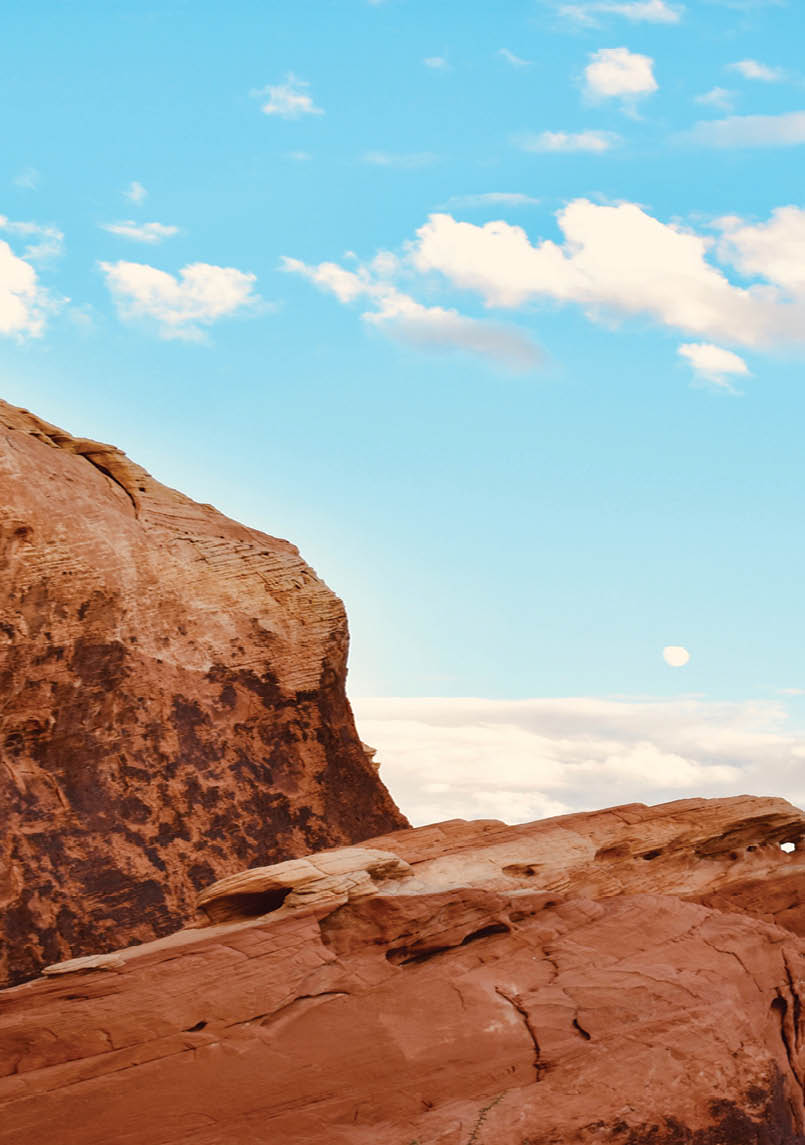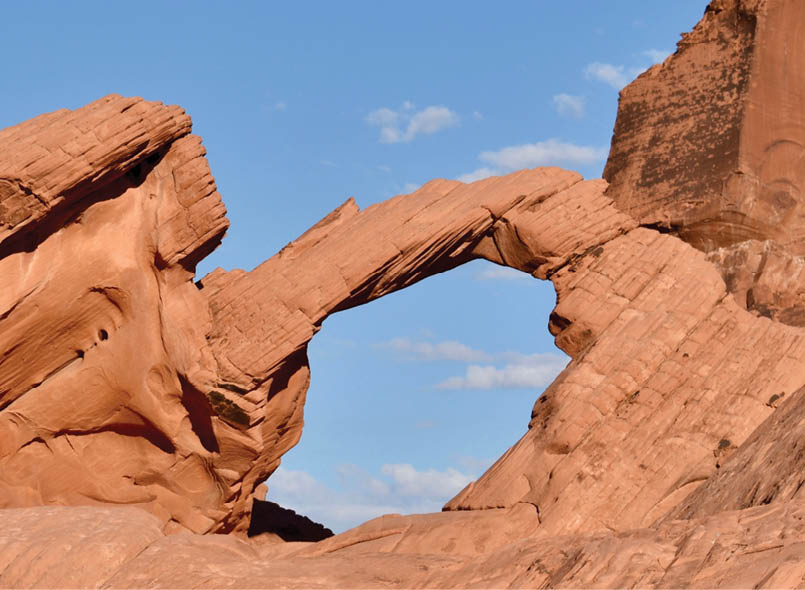


Hearing, Seeing: Nature and Artificial Environments
Karen Allen, SoundProject 2019

We travel long distances to immerse ourselves in nature, far from our urban habitats. We see much and hear a little, then return refreshed. When we bring creatures from nature into our urban world, they see a little, hear the unfamiliar. Can recorded natural soundscape help them? Karen Allen shares her experience trekking in Nevada's Valley of Fire state park, and introduces the San Francisco-based SoundProject2019 pilot project that is betting on native sounds as a low cost and high impact quality of life improvement.
Moon rising over the Valley of FireConnie Combs
62 | BWA October 2019
Nevada's Valley of Fire is about two hours drive north-east of Las Vegas. Trekking here includes practical survival considerations: summer daytime temperatures can exceed 45 °C. Sudden thunderstorms and flash floods sometimes submerge trails in the dry desert river washes. There are rattlesnakes and scorpions. But none of that should be beyond the skillset for an Aussie bushwalker, should it?
A place so dramatically visualThe park is named for red rock formations, imbued with oxidized iron, known as Aztec sandstone. The Valley of Fire moniker describes an incredible visual blaze when the sun shines off these rocks, especially at a low angle of sun early or late in the day. The color is more vivid than a camera can grasp for a viewer's eye. Toward dusk, the visual effect in the park is beyond otherworldly, with the dusty green colors of sage and brush gently glowing as if lit from within, in sharp contrast to broad washes of red sand. It looks like an altered landscape from a sci-fi movie set.
Humans are a visual species, other creatures not so muchThese pictures and words engage our visual imagination. People evolved in a way that prioritized vision. Our eyes have a high biological priority. As complex structures, eyes use about one third as much oxygen as our much larger and far more active hearts. Our vision communicates our external world to the brain.
Unlike us, most native creatures in the Valley of Fire and elsewhere tend to be far less vision dominant. Many species evolved to prioritize sound, which is reliable in dusk and dark as well as daytime. Sound works when standing on a hilltop or when hiding under a rock. These creatures communicate with their external world through a soundscape.
Compared to people, they hear far wider ranges of frequency, and pick up sounds much further away. Interestingly, lizards have the most specific directionality of sound detection of any terrestrial species that has been studied.

Arch RockConnie Combs
BWA October 2019 | 63


People go bushwalking, creatures get collectedWe leave our urban habitats to enjoy natural spaces like the Valley of Fire. We step away from urban environments that create a level of artificial stress for us, sometimes finding that modern civilization and it's sensory thumbprint accompanies us with sounds of airplanes or cars. We seek out natural, undisturbed places. We return refreshed.
In our nature explorations, we find creatures that intrigue us. Humans have been domesticating animal species or keeping pets for an estimated 11,000 years, often to their advantage. We choose amazing representatives of nature for our homes, shops and public spaces. We bring them into the same urban environments that create varying levels of stress for us. We create artificial habitats for these animals that have potential stressors for them.
Animals in silence and noise: animal bioacousticsThe emerging field of animal bioacoustics evaluates (among other things) the stresses of silence or urban sounds for enclosed animals. Silence is an unnatural state for creatures that interpret the world through sound. In nature, a temporary, brief silence tends to happen in the presence of a threatening predator. In all other circumstances, the soundscape includes familiar activity, life and weather of the surrounding environment.
As an example, imagine a pet bearded dragon in a large aquarium, open in the front to view the lounge in a home. Glass surfaces of the tank reflect sound easily, which does not happen in nature. While the family is away work and school, the house is silent.
During the evening or weekend, the room has sounds of television, music, conversation and household chores. Neither silence nor urban home sounds are "normal" for the animal. Both the absence of native biological sounds and the presence of non-native sounds create stress.
SoundProject2019For the wide variety of animals kept by people - livestock, pets, inhabitants of zoos and research labs - this element of soundscape is a priority to explore and improve. Preliminary research has shown that captive animals hearing natural sounds have better health, improved reproduction, less unnatural behavior.
Natural soundscape appears to be one of the most readily available tools to improve the quality of animal enclosures. In a pilot study, the San Francisco-based SoundProject2019 team is evaluating the biologically measurable indicators of health for three types of reptiles with acute hearing: salamanders, bearded dragons, and green iguanas. Through the use of recordings of native soundscapes, the sound element of a natural environment will be introduced to an otherwise foreign animal enclosure. Comparisons between sound-enriched and silent environments will provide guidelines for improving the quality of life for these and other of nature's creatures in our care.
Bushwalker involvement in SoundProject 2019As part of SoundProject 2019, bushwalkers are needed to record sounds. Payment is A$75-150 and depends on the length of the recording. On Bushwalk.com there is a topic on this, and you can contact me at soundproject2019@gmail.com.
Soundproject2019 view, beautiful but not natural, Golden Gate Bridge, San FranciscoKaren Allen
64 | BWA October 2019